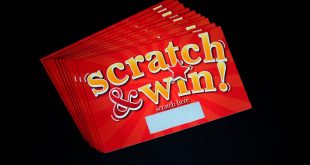Selecting the perfect cycle for kids is a significant decision that can influence their interest in cycling, their safety, and their overall enjoyment. Whether it’s your child’s first bike or an upgrade to a more advanced model, the choice you make will be remembered for years to come. This guide provides comprehensive tips and tricks to help you make an informed decision, ensuring that you select a bike that not only fits your child’s physical capabilities but also sparks their enthusiasm for cycling.
1. Understanding Your Child’s Riding Experience
The first step in choosing a cycle for kids is assessing their current riding experience. Understanding where they are in their cycling journey will help you determine what type of bicycle is most suitable.
Beginner Riders
For children who are just starting, balance is the most important aspect. Training wheels or balance bikes are ideal for beginners. Balance bikes, which don’t have pedals, are designed to teach young kids how to balance on two wheels. These bikes are a great introduction to cycling, helping kids develop the necessary skills before transitioning to a pedal bike.
If you’re considering training wheels, ensure they are sturdy and adjustable, allowing for gradual weaning as the child’s confidence grows. Training wheels provide stability, which is crucial for beginners, but they should eventually be removed to encourage independent riding.
Intermediate Riders
Children who have mastered balance and basic cycling skills may be ready for a more advanced bike. At this stage, kids typically require a bicycle that offers a bit more speed and control without overwhelming them. Look for models that are lightweight and easy to handle, as these will help build their confidence.
For intermediate riders, boys bicycles with more sophisticated designs and features can be a good fit. These bikes often come with larger wheels and are designed to handle a variety of surfaces, allowing children to explore different terrains as they gain experience.
Advanced Riders
If your child is already comfortable riding and is looking for more challenges, you might consider bikes that offer enhanced performance features. While it’s important not to overwhelm them with too many complex features, a more advanced bike can provide the excitement and challenge they crave. These bikes are typically suited for more adventurous riding, including off-road trails or cycling at higher speeds.
2. Safety Features: Prioritizing Your Child’s Well-being
Safety should always be the top priority when selecting a cycle for kids. A bike that is safe and reliable will give both you and your child peace of mind.
Reflectors and Lighting
Visibility is crucial, especially if your child will be riding in areas with traffic or during dusk. Look for bicycles that come with reflectors on the front, back, and on the wheels. Some bikes also include built-in lights, which are a great feature for added safety. If the bike doesn’t come with lights, you can purchase them separately and easily attach them.
Chain Guards
A chain guard is a simple but effective safety feature that prevents your child’s clothing from getting caught in the chain. This is particularly important for younger children who may not yet be aware of the dangers of a moving chain. It also helps keep the chain clean and free from debris, reducing the chances of mechanical issues.
Tyres and Traction
Tyres play a crucial role in the bike’s safety and performance. For beginners, wider tyres with more traction are ideal, as they provide better stability and grip on various surfaces. This is especially important if your child will be riding on uneven or slippery surfaces. For more experienced riders, you might opt for narrower tyres that allow for faster speeds, but these should still offer sufficient grip to ensure safety.
3. Comfort: Ensuring a Pleasant Riding Experience
Comfort is key to ensuring that your child enjoys riding their new bike. An uncomfortable bike can lead to disinterest or even discourage your child from riding altogether.
Seat Comfort
The seat, or saddle, is one of the most important components when it comes to comfort. A good seat should be soft enough to provide comfort but firm enough to support your child’s weight. Many children’s bikes come with adjustable seats, which allow you to raise or lower the height as your child grows.
When selecting a cycle for kids, consider the seat’s shape and padding. Some boys bicycles may come with more streamlined seats, while others might have wider, cushioned saddles for added comfort. If possible, have your child sit on the bike before purchasing to ensure the seat feels comfortable.
Handlebar Design
The design and positioning of the handlebars can greatly affect your child’s comfort while riding. Handlebars that are too high or too low can cause strain on your child’s back and arms. Look for handlebars that are adjustable or are positioned at a comfortable height that promotes good posture. The grips should also be soft and non-slip to ensure a secure and comfortable hold.
Weight of the Bike
The weight of the bike is another critical factor in comfort. A bike that is too heavy can be difficult for a child to control, leading to fatigue and frustration. Lightweight bikes are easier for kids to handle, especially when they need to lift the bike over obstacles or carry it upstairs. However, ensure that the bike is sturdy enough to withstand regular use and any accidental falls.
4. Style and Personalization: Making the Bike Exciting
One of the most fun aspects of selecting a cycle for kids is choosing a style that matches your child’s personality. A bike that your child loves aesthetically can make all the difference in how often they want to ride it.
Colours and Designs
Children are naturally drawn to bright colours and fun designs. When selecting a bike, consider your child’s favourite colours or themes. Many boys bicycles come in vibrant colours like blue, red, or green, and often feature graphics of popular characters or sports. These design elements can make the bike more appealing and exciting for your child.
Accessories and Add-ons
Personalization doesn’t stop at the bike’s colour. There are numerous accessories available that can make your child’s bike unique. Some popular accessories include:
- Baskets: Perfect for carrying toys, snacks, or other small items.
- Bells and Horns: These are not only fun but also practical for alerting others of your child’s presence.
- Training Wheels: While these are more functional than decorative, training wheels can be customized with stickers or colours to match the bike.
5. Budget and Value: Maximizing Your Investment
When selecting a cycle for kids, it’s important to balance your budget with the desired features and quality. While cheaper options may seem appealing, investing in a well-made bike often provides better long-term value. A higher-quality bike, though slightly more expensive, is likely to last longer and need fewer repairs. Adjustable models can grow with your child, reducing the need for frequent replacements. Additionally, watch for seasonal sales and online deals, which can help you find a quality bike at a more affordable price.
Selecting the perfect cycle for kids involves more than just picking the right size or colour. It’s about understanding your child’s needs, ensuring their safety, and providing them with a bike that is both comfortable and exciting to ride. By considering your child’s experience level, safety features, comfort elements, style preferences, and the terrain they’ll be riding on, you can make an informed decision that will set your child on the path to a lifelong love of cycling.
Whether you’re looking at boys bicycles designed for adventure or a simple bike for neighbourhood rides, the right choice will provide your child with joy, confidence, and the freedom to explore their world on two wheels.
 Daily Blogger News Stay updated with the latest trends and insights. Your reliable source for daily updates and information.
Daily Blogger News Stay updated with the latest trends and insights. Your reliable source for daily updates and information.







